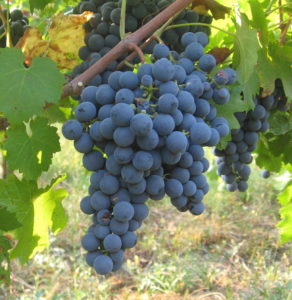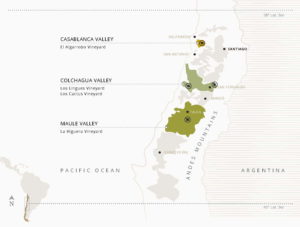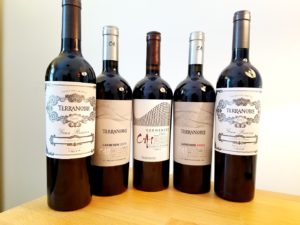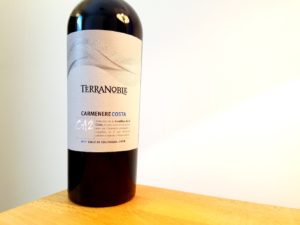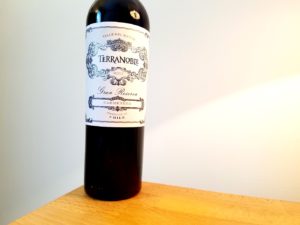The Evolution of Chilean Carmenere – TerraNoble Winery’s Exploration of Carmenere Terroir
If you haven’t had carmenere in the last five years, now is a good time to try it again because it has evolved into something rather special.
What is Carmenere?
Carmenere is a dark-skinned, Bordeaux grape variety and the child grape of cabernet franc and trousseau noir.
Carmenere produces full-bodied, deep-colored wine when fully ripened, and herbaceous wine with hints of green pepper when picked too early.
The French grape is one of the six grapes allowed in red Bordeaux, though it rarely contributes to modern Bordeaux blends as the grape was nearly lost in Europe during the phylloxera scourge and is only grown in miniscule quantities in France today.
Along with the five other Bordeaux grapes carmenere was brought to Chile in the 19th century, and over time became mistaken for merlot until 1994.
If you remember the herbaceous, green pepper notes in 1990s and early 2000s Chilean merlot, you’ve tasted underripe carmenere.
Before they were correctly identified, distinguished and separated, carmenere and merlot grapes were unknowingly grown, harvested and vinified together.
Carmenere is a late-ripening grape that needs to be picked late in the season after merlot and cabernet sauvignon in order to avoid herbaceous-green pepper notes and harsh tannin.
It took some time for grape growers and wine producers to recognize this which is why early carmenere bottlings were characterized by distinct herbal notes.
But this has all changed today.
Chile is the Home of Carmenere’s Evolution
In addition to being the world’s largest producer of carmenere with over 25,000 acres under vine, Chile is now the home of this former, Bordeaux-blending-grape’s evolution.
Chile’s warm, Mediterranean climate allows carmenere grapes to reach full maturity and peak ripeness.
Through advances in viticulture and vinification, the grape is now able to express itself fully and as the most flattering version of itself.
Modern carmenere can be at once full-bodied, restrained and opulent.
And to my delight and surprise, the grape can also be terroir expressive.
Carmenere Terroir Expressiveness
I recently had the opportunity to learn more about carmenere’s terroir expressiveness from Chile’s TerraNoble winery founded in 1993 in Maule Valley.
TerraNoble has carmenere vineyards in different areas of Colchagua Valley and Maule Valley.
As a Sustainable Wines of Chile Certified winery, Terra Noble produces wine in accordance with its philosophy of conservation and minimum intervention so its wine reflects a sense of place.
Here’s what I discovered tasting carmenere from three different vineyard areas (see links to detailed tasting notes below):
-
TerraNoble, CA1 Andes Carmenere 2016, Colchagua Valley, Chile (Wine Casual, 92 Points)
- TerraNoble, CA1 Andes Carmenere 2017, Colchagua Valley, Chile (Wine Casual, 91 Points)
- TerraNoble, CA2 Carmenere Costa 2017, Colchagua, Chile (Wine Casual, 91 Points)
- TerraNoble, Gran Reserva Carmenere 2017, Maule Valley, Chile (Wine Casual, 93 Points)
Colchagua Valley: One Valley, Two Wines & Two Expressions
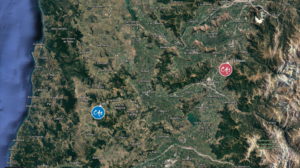
Photo: TerraNoble winery’s carmenere CA1 Vineyard in Andes Foothills and CA2 Vineyard near the Pacific Coast.
Located 94 miles south of Santiago, TerraNoble has two Colchagua Valley vineyards that produce carmenere grapes – CA1 (“CA” is short for “carmenere”) located at the base of the Andes Mountain, and CA2 located near the Pacific Coast.
In the foothills of the Andes CA1 grapes are grown on low-fertility, alluvial soil made up of fine sand, clay and granite with good drainage.
Benefiting from Pacific Coast cooling influences, CA2 grapes are grown on low-fertility sandy-loam soil with round, granite stones.
Carmenere grapes from the two vineyard areas are vinified, produced and aged similarly, but produce distinctly different wines.
Both vineyards produce aromatic, full-bodied carmenere with smooth tannin, but in two distinct styles.
At the base of the Andes, CA1 produces red-fruit-focused carmenere that would make Bordeaux envious due to its just-ripened, yet restrained-fruit qualities that even while being uniquely Chilean nod towards the old world.
Near the coast, CA2 produces black-fruit-leaning carmenere with marked concentration and depth that would impress cabernet sauvignon aficionados.
Maule Valley: Black Fruit & Accessible Tannin
Carmenere from TerraNoble’s Maule Valley vineyard is grown on medium-to-low fertility, sedimentary alluvial soil formed by glaciers.
Maule Valley produces black-fruit-forward carmenere with a more accessible and relaxed tannin structure than Colchagua Valley carmenere.
The wine has a midpalate and tannin character that is strikingly similar to merlot.
Your Turn to Rediscover Carmenere
For a grape with only 25,000 acres under vine, it’s rare to get an opportunity to discover terroir expression.
Nearly 30 years in the making, TerraNoble now offers curious wine drinkers this opportunity with their laser focus on revealing the subtleties of terroir.
Carmenere has proven its capacity to be elegant, silky and fresh with smooth tannin and fresh, natural acidity.
I’m actually pretty excited now about modern carmenere and look forward to its continued evolution.
Try a carmenere at dinner instead of a cabernet sauvignon, Bordeaux or syrah, and give yourself the chance to rediscover carmenere and experience how it has evolved in such a short period of time.

